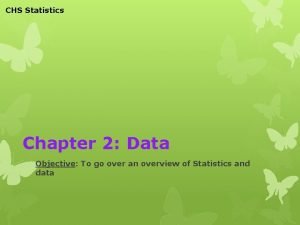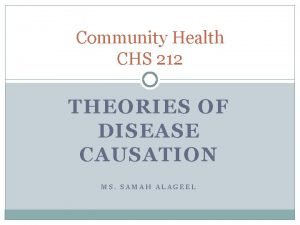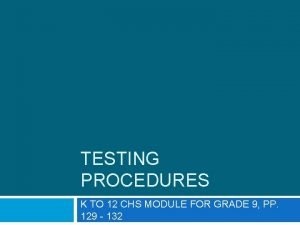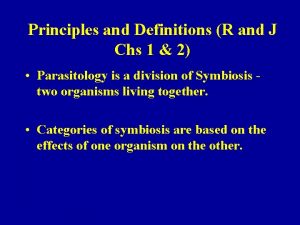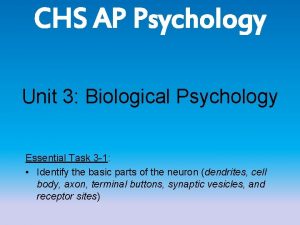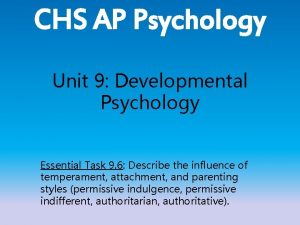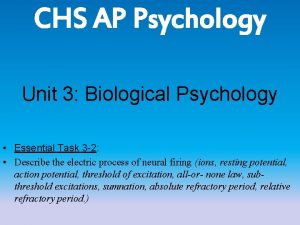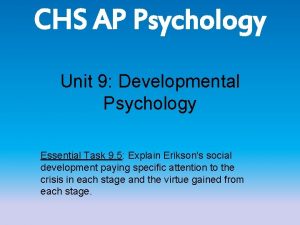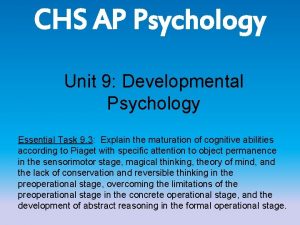CHS AP Psychology Unit 14 Social Psychology Essential








- Slides: 8

CHS AP Psychology Unit 14: Social Psychology Essential Task 12 -2: Discuss attitude formation and how attitudes change with specific attention to schema, primacy effect, cognitive dissonance and the central and peripheral routes to persuasion.

Cognitive Dissonance Theory • (Leon Festinger 1957) • Occurs whenever a person has two contradictory cognitions or beliefs at the same time. They are dissonant, each one implies the opposite of the other. • The less coerced and more responsible we feel for an action the more dissonance. The more dissonance the more likely we are to change our attitude • It creates an unpleasant cognitive tension and the person tries to resolve in the following ways: (see next slide)

Audience Characteristics • Most difficult to change if – Strong commitment to present attitude – Attitude is shared by others – The attitude has been held since early childhood • Up to a point the larger the difference between message and audience the more likely attitudinal change will occur • Low self-esteem more likely to change

Resolution of Cognitive Dissonance 1. Sometimes changing your attitude is the easiest way to solve this. – Example: I am a loyal friend, but yesterday I gossiped about my friend Chris. . . Well I can’t change my action. . . but I don’t want to change my view of myself, so my attitude about Chris must be wrong. He is more of an acquaintance than a friend. 2. Increase the number of consonant elements – the number of thoughts that back one side. – It was awesome gossip 3. Reduce the importance of one or both of the sides – The person I gossiped with won’t really tell that many people.

Obedience and Conformity • Sometimes we experience Cognitive Dissonance when we feel we have to obey something in which we do not necessarily believe. • Milgram’s Obedience Study – What would it look like if done today? https: //www. youtube. com/watch? v=Jn. YUl 6 wl. BF 4 – Take notes on the video in whichever format you choose

After the Video Clip… Respond on the back of your notes: a)What conditions influenced participants to obey? b)What elements are present in your own life that encourage obedience? c)What are the implications of Milgram’s findings? As a student? A citizen? Other roles?

Asch’s Experiment • People, 35% of the time, will conform to incorrect answers if other people in the group do as well. • WHY? • Informational Social Influence: The influence other people have on us because we want to be right. • Normative Social Influence: The influence others have on us because we want them to like us.

Outside the Class Experiment • Another one of Milgram’s studies was to have a small group of people look up at the sky. – He wanted to see how many other people would be willing to look. • Try this outside the class sometime before class tomorrow. • Report back and tell me how it went!



